Unlike a quick list of dos and don’ts guiding the morality of the human race, koi keeping requires many more commandments. It was incredibly difficult, but we managed to distill the rules of koi keeping into just 15.
Thou Shalt Keep the Water
Keep the water and it will keep the koi. Clean water is the alpha and omega of koi keeping. It has been said by wiser folk that, as a koi keeper, you are a waterkeeper first.
Clean water, with proper parameters, means healthy koi. Even if there should be a parasite infestation, healthy water will give the koi in it a better shot at staying healthy and recovering more quickly.
Your pond or tank is a closed system, which means that nature cannot perform its regular cleaning service. This means that you, as the waterkeeper, must tend to this vital service.
Thine Filtration Shalt be Large Enough to Handle Thine Current and Future Fish Load
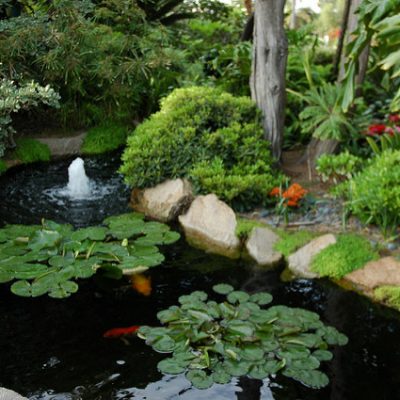
Choose your pond size wisely—and your filters even more so.
The number of fish you can keep healthily is directly proportional to the size of the pond you build. More (or bigger) fish means more waste. More waste means more ammonia. Ammonia is poison to koi. If you have too much of ammonia in your pond water, your koi will die.
Enter filtration.
There are numerous types and styles of filtration, serving different needs and different budgets.
The one thing that all forms of filtration should do, however, is to be able, at the bare minimum, to keep pace with the size and number of fish that you have.
Inadequate filtration occurs when your filters cannot sufficiently process the waste produced by your koi, and it can lead to poor water parameters and unhealthy fish. You cannot overfeed your filters.
Do thine homework. A good rule of thumb for the number of fish you should keep is 1” / 10gal (one inch of koi per 10 gallons of pond water). Make sure that you know what type and size filtration you will need to keep up with your pond and the number of fish you will have in it.
And know thine self. Keeping one koi begets keeping two koi. You will always be looking for your next koi. And the ones you have will get bigger. In some instances (looking at you, Chagoi), much bigger.
Thou Shalt Clean Thine Filters Every Week
Just do it.
Your koi are waste machines. They generate incredible amounts of excrement while looking amazing in your pond. This waste, once it is is removed from your pond, has to go somewhere. That somewhere is your filters.
Cleaning your filters regularly gives them the best opportunity to work at their peak. Well maintained filters help keep the water healthy. Healthy water translates to healthy fish.
Thou Shalt Not Put Rocks in the Pond
Rocks are a great place for stuff you don’t want in your pond to grow and hide. They make great breeding grounds for bacteria and parasites.
Plus, rocks make it more difficult and time-consuming to clean your pond. Without proper cleanings, rocks will trap debris and increase the likelihood of Dissolved Organic Compounds (DOCs) in your pond.
You may be tempted to add rocks as a means of fostering beneficial bacteria that helps filter ammonia and waste in your pond; however, as fish waste accumulates on the rocks, it chokes out any beneficial bacteria, rendering it useless.
When it comes time to clean the rocks (which ordinarily involves a powerwash), the koi need to be netted, transported and stored (which is stressful), the pond drained, the rocks cleaned, and the pond refilled. With the pond filled entirely with new water, the conditions are perfect for new pond syndrome, which is extremely stressful for the returning koi.
Keep it simple and keep it clean: don’t add rocks.
Thou Shalt Not Use Submerged Lava Rock as Filter Media
In addition to the reasons outlined above for avoiding rocks, lava rock is especially dangerous because it is sharp. It can damage your koi’s skin, which can give opportunistic pathogens a foothold.
The rough surface also allows waste accumulation that is tough to clean once it is put on the bottom of your pond.
There are better and more efficient means of colonizing nitrifying bacteria in your pond that don’t require a media that is tough to clean and can damage your koi.
Thou Shalt Replace Up To 25% of the Water Every Week, Adding Dechlorinator If Needed
Your pond is a closed system. Outside of rain (which can bring its own additive and chemical-based issues to a pond), no new water is added to your pond. Instead, this is something that you must do.
Pumping out a percentage of your pond’s water and then adding new water to a pond helps to maintain higher levels of water quality as well as removing some of the waste.
City or municipal water often has chlorine or chloramine added to it. Neither are good for your koi’s health. Chlorine is harmful to the sensitive tissue on the gills. Adding dechlor will stop those chemicals from doing any damage.
Dechlorinator is the Only Chemical Thou Shalt Add to Your Pond
What you add to your pond stays in your pond. There will be situations where adding chemicals might be a necessary evil, such as when dealing with parasite issues. But, if it can be avoided, keep chemicals out of your pond. Adding too much of a chemical compound or not knowing the accurate dosage can be harmful and even fatal to a koi population and plant life.
Adding chemicals prophylactically can lead to bug resistance, which then leads to new chemicals. It can be a vicious cycle that’s best to avoid.
Thou Shalt Learn How to Properly Quarantine
We’ve spoken profusely over the years about the importance of quarantining koi to keep your pond healthy and to minimize stress to your new koi. Learning how and when to employ quarantine protocols is a must for any koi keeper.
Actually, quarantine has its own list of commandments. That’ll be on a separate stone tablet coming soon to a pond near you.
Thou Shalt Not Overcrowd the Pond
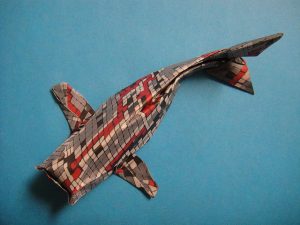
There is such a thing as too much of a good thing. Too many koi can lead to a bevy of problems. Your pond’s volume can only safely handle a certain quantity of koi while keeping the water quality high and the fish healthy. This number is contingent on the size of your koi and the size of your pond. The larger the koi, the fewer the number of fish the pond can handle.
If you absolutely have to have another koi, consider building a bigger pond or putting some of your other koi up for adoption. There are plenty of koi groups that are able to help rehome your koi.
Thou Shalt Have Air Going In The Pond At All Times.
Koi, like people, require oxygen to live. Just like people, they cannot survive if there is not enough available oxygen in their aquatic environment. Low dissolved oxygen is one of the silent killers often overlooked or misjudged by koi keepers.
Koi keepers should aim for a dissolved oxygen level of 7-9 mg/L. And it should be routinely checked.
Atmospheric and weather conditions affect oxygen levels in your pond’s water. Remember, warmer water will have less dissolved oxygen in it. Submerged pond plants, algae and even your beneficial bacteria will soak oxygen up at night. Tap water, introduced during water changes, also has low dissolved oxygen levels.
If your pond is over 4 feet deep, adding oxygen is a must. Aerators placed on the bottom of a pond will bubble oxygen into the water column. Waterfalls also reintroduce dissolved oxygen into the water column. Jets and fountains will do the same thing.
Don’t leave it to chance. Make sure that oxygen is being continually added to your pond.
Thou Shalt Have at Least One Bottom Drain
Poop sinks. Sediment sinks. Everything eventually trends to the bottom of your pond. It makes sense, then, to install something at the bottom of your pond to help get rid of all of the waste. Depending on the size of your pond, you should always plan to have at least one bottom drain to help maintain good water quality.
Additionally, bottom drains help circulate the water down, through your mechanical and biological filters, adding oxygen and introducing clean water back into the pond. Some bottom drains also come equipped with aerators. Two birds, one stone.
Thou Shalt Have at Least One Skimmer
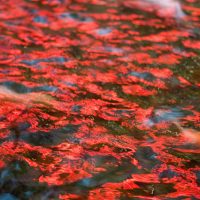
Skimmers help you get debris on the top before it sinks to the bottom of your pond. On the bottom, debris decomposes, adding more dissolved organics and nutrients for algae blooms and poor water quality. Some submerged debris can also play havoc with pumps.
A skimmer will circulate floating debris into a catch basket where it can be removed before it becomes a nuisance. Some of them also come with built-in aerators.
Thou Shalt Buy Koi Only From Trusted Sources
One koi with an illness, parasite or disease is all it takes to put the rest of your living jewels at risk of infection–or worse. If you aren’t sure about the supplier, don’t buy.
There are a number of reputable dealers in the United States and abroad. Do a little research, ask fellow koi keepers, and find out about the dealer or source of your intended koi purchase (or pick up).
And, remember, even if you trust the source, always quarantine anyway!
Thou Shalt Learn How to Diagnose and Treat Parasites and Bacterial Infections
One thing that they probably failed to mention when you became a koi keeper is that you would have to become an expert on parasitology, bacteriology, virology, microbiology and some other -ologies that are yet to be named.
There are a number of bugs and nasties that are part and parcel of koi keeping. The very water that you most lovingly and meticulously care for is naturally full of bugs that will do harm to your koi given the slightest opportunity. You have to know what they are, how to stop them and, if you can’t, how to treat them.
Your fellow koi keepers are a wonderful source of information when it comes time to determine what is ailing your koi. However, learning how to spot the illness and how to combat it can mean the difference between dealing with an outbreak or stopping it before it starts.
Thou Shalt Require More Money Than Thou Thinks
Whatever amount you have in your head as the absolute ceiling on how much you are willing to spend on koi keeping, multiply it twice, and then add an extra $100. But when you get it just right, with the pond you want, clean water, healthy fish and time to spend watching them in that pond, it will all have been worth every (extra) penny.
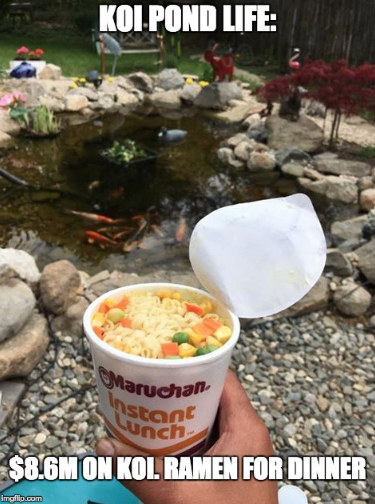
These are commandments. Not everyone liked the original commandments or even chose to observe them. Take them if you want. Leave them at your peril. It’s up to you.

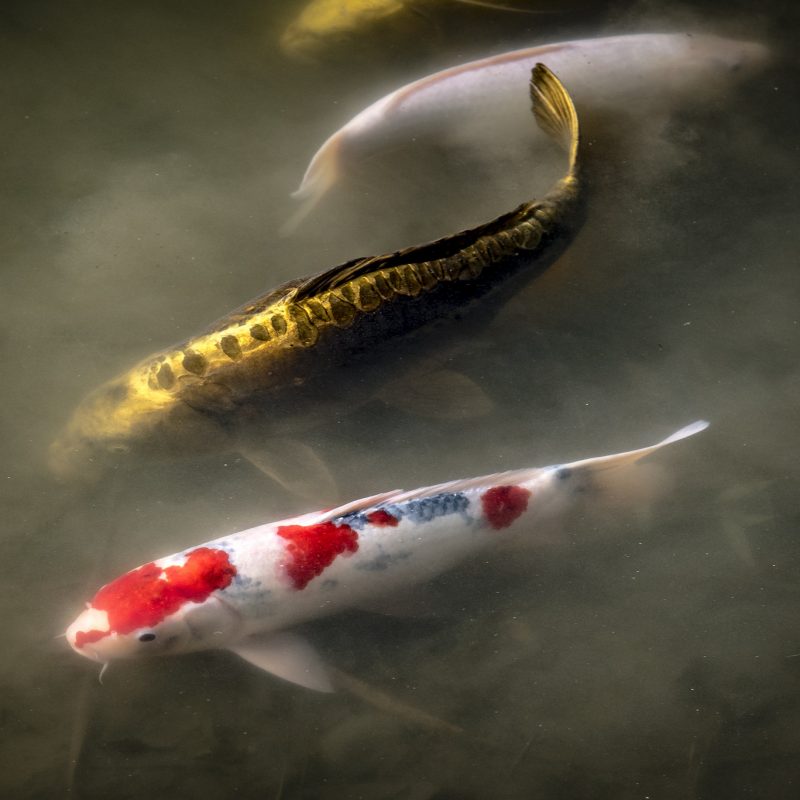
Very insightful commandments especially about the amount of money eventually needed for a koi pond! But, as stated, I have no doubt will be worth every penny.
ill koi’s eat their babies? How can you tell a female from a male. I would like to have baby koi’s/ what is the best way? I have a large man made pond regretfully with rock bottom and sides. It has a liner under the rocks. The pond is about 20 yrs. old and I have enjoyed it. I have some one empty the water each year and put water in. The koi are removed to tanks while this is done. Please help me with information
We have sent you an email containing some information on koi sexing, and raising koi from eggs. We hope that you will find it helpful.
This is a great sight and full of very good information. However I take exception to lava rock clogging up. ALL media well clog if not cleaned properly. Lava rock well stay clean for many years if cleaned properly.